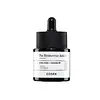What's inside
What's inside
 Key Ingredients
Key Ingredients

 Benefits
Benefits

 Concerns
Concerns

 Ingredients Side-by-side
Ingredients Side-by-side

Water
Skin ConditioningButylene Glycol
HumectantPropanediol
SolventGlycerin
HumectantSodium Hyaluronate 3%
HumectantPentylene Glycol
Skin Conditioning1,2-Hexanediol
Skin ConditioningDiethoxyethyl Succinate
SolventSodium Polyacryloyldimethyl Taurate
Emulsion StabilisingBetaine
HumectantXanthan Gum
EmulsifyingDimethicone
EmollientHydroxyethyl Acrylate/Sodium Acryloyldimethyl Taurate Copolymer
Emulsion StabilisingSodium PCA
HumectantSodium Lactate
BufferingPCA
HumectantGlyceryl Acrylate/Acrylic Acid Copolymer
HumectantHydrogenated Lecithin
EmulsifyingEthylhexylglycerin
Skin ConditioningSerine
MaskingAlanine
MaskingGlycine
BufferingSodium Phytate
Sorbitan Isostearate
EmulsifyingPvm/Ma Copolymer
Emulsion StabilisingGlutamic Acid
HumectantCitric Acid
BufferingLysine Hcl
Skin ConditioningThreonine
Arginine
MaskingSodium Methyl Stearoyl Taurate
CleansingProline
Skin ConditioningCeramide NP
Skin ConditioningCholesterol
EmollientCaprylic/Capric Triglyceride
MaskingPhytosphingosine
Skin ConditioningStearic Acid
CleansingOleic Acid
EmollientAlcohol
AntimicrobialTocopherol
AntioxidantLactic Acid
BufferingCaprylyl Glycol
EmollientCaprylhydroxamic Acid
Water, Butylene Glycol, Propanediol, Glycerin, Sodium Hyaluronate 3%, Pentylene Glycol, 1,2-Hexanediol, Diethoxyethyl Succinate, Sodium Polyacryloyldimethyl Taurate, Betaine, Xanthan Gum, Dimethicone, Hydroxyethyl Acrylate/Sodium Acryloyldimethyl Taurate Copolymer, Sodium PCA, Sodium Lactate, PCA, Glyceryl Acrylate/Acrylic Acid Copolymer, Hydrogenated Lecithin, Ethylhexylglycerin, Serine, Alanine, Glycine, Sodium Phytate, Sorbitan Isostearate, Pvm/Ma Copolymer, Glutamic Acid, Citric Acid, Lysine Hcl, Threonine, Arginine, Sodium Methyl Stearoyl Taurate, Proline, Ceramide NP, Cholesterol, Caprylic/Capric Triglyceride, Phytosphingosine, Stearic Acid, Oleic Acid, Alcohol, Tocopherol, Lactic Acid, Caprylyl Glycol, Caprylhydroxamic Acid
Water
Skin ConditioningBifida Ferment Lysate
Skin ConditioningPEG-8
HumectantPropanediol
SolventBis-PEG-18 Methyl Ether Dimethyl Silane
EmollientMethyl Gluceth-20
HumectantGlycereth-26
HumectantPEG-75
HumectantButylene Glycol
HumectantAdansonia Digitata Seed Extract
Skin ConditioningTripeptide-32
Skin ConditioningSodium Hyaluronate
HumectantYeast Extract
Skin ConditioningLactobacillus Ferment
Skin ConditioningCola Acuminata Seed Extract
Skin ConditioningAnthemis Nobilis Flower Extract
MaskingHydrolyzed Algin
Pantethine
EmollientCaffeine
Skin ConditioningLecithin
EmollientSodium Rna
Skin ConditioningBisabolol
MaskingSqualane
EmollientGlycerin
HumectantOleth-3 Phosphate
Caprylyl Glycol
EmollientOleth-3
EmulsifyingOleth-5
EmulsifyingCholeth-24
EmulsifyingHydrogenated Lecithin
EmulsifyingJojoba Wax PEG-120 Esters
Ceteth-24
CleansingTocopheryl Acetate
AntioxidantCarbomer
Emulsion StabilisingTriethanolamine
BufferingTetrasodium EDTA
BHT
AntioxidantXanthan Gum
EmulsifyingPotassium Sorbate
PreservativeDisodium EDTA
Phenoxyethanol
PreservativeCI 14700
Cosmetic ColorantCI 19140
Cosmetic ColorantWater, Bifida Ferment Lysate, PEG-8, Propanediol, Bis-PEG-18 Methyl Ether Dimethyl Silane, Methyl Gluceth-20, Glycereth-26, PEG-75, Butylene Glycol, Adansonia Digitata Seed Extract, Tripeptide-32, Sodium Hyaluronate, Yeast Extract, Lactobacillus Ferment, Cola Acuminata Seed Extract, Anthemis Nobilis Flower Extract, Hydrolyzed Algin, Pantethine, Caffeine, Lecithin, Sodium Rna, Bisabolol, Squalane, Glycerin, Oleth-3 Phosphate, Caprylyl Glycol, Oleth-3, Oleth-5, Choleth-24, Hydrogenated Lecithin, Jojoba Wax PEG-120 Esters, Ceteth-24, Tocopheryl Acetate, Carbomer, Triethanolamine, Tetrasodium EDTA, BHT, Xanthan Gum, Potassium Sorbate, Disodium EDTA, Phenoxyethanol, CI 14700, CI 19140
 Reviews
Reviews

Ingredients Explained
These ingredients are found in both products.
Ingredients higher up in an ingredient list are typically present in a larger amount.
Butylene Glycol (or BG) is used within cosmetic products for a few different reasons:
Overall, Butylene Glycol is a safe and well-rounded ingredient that works well with other ingredients.
Though this ingredient works well with most skin types, some people with sensitive skin may experience a reaction such as allergic rashes, closed comedones, or itchiness.
Learn more about Butylene GlycolCaprylyl Glycol is a humectant and emollient, meaning it attracts and preserves moisture.
It is a common ingredient in many products, especially those designed to hydrate skin. The primary benefits are retaining moisture, skin softening, and promoting a healthy skin barrier.
Though Caprylyl Glycol is an alcohol derived from fatty acids, it is not the kind that can dry out skin.
This ingredient is also used as a preservative to extend the life of products. It has slight antimicrobial properties.
Learn more about Caprylyl GlycolGlycerin is already naturally found in your skin. It helps moisturize and protect your skin.
A study from 2016 found glycerin to be more effective as a humectant than AHAs and hyaluronic acid.
As a humectant, it helps the skin stay hydrated by pulling moisture to your skin. The low molecular weight of glycerin allows it to pull moisture into the deeper layers of your skin.
Hydrated skin improves your skin barrier; Your skin barrier helps protect against irritants and bacteria.
Glycerin has also been found to have antimicrobial and antiviral properties. Due to these properties, glycerin is often used in wound and burn treatments.
In cosmetics, glycerin is usually derived from plants such as soybean or palm. However, it can also be sourced from animals, such as tallow or animal fat.
This ingredient is organic, colorless, odorless, and non-toxic.
Glycerin is the name for this ingredient in American English. British English uses Glycerol/Glycerine.
Learn more about GlycerinHydrogenated Lecithin is created from the hydrogenation of lecithin (a group of phospholipids). Hydrogenation is a chemical reaction between hydrogen and another element.
This ingredient is an emollient and emulsifier. As an emollient, it helps soften skin by trapping moisture within. As an emulsifier, it prevents oil and water ingredients from separating.
Propanediol is an all-star ingredient. It softens, hydrates, and smooths the skin.
It’s often used to:
Propanediol is not likely to cause sensitivity and considered safe to use. It is derived from corn or petroleum with a clear color and no scent.
Learn more about PropanediolSodium Hyaluronate is hyaluronic acid's salt form. It is commonly derived from the sodium salt of hyaluronic acid.
Like hyaluronic acid, it is great at holding water and acts as a humectant. This makes it a great skin hydrating ingredient.
Sodium Hyaluronate is naturally occurring in our bodies and is mostly found in eye fluid and joints.
These are some other common types of Hyaluronic Acid:
Learn more about Sodium HyaluronateWater. It's the most common cosmetic ingredient of all. You'll usually see it at the top of ingredient lists, meaning that it makes up the largest part of the product.
So why is it so popular? Water most often acts as a solvent - this means that it helps dissolve other ingredients into the formulation.
You'll also recognize water as that liquid we all need to stay alive. If you see this, drink a glass of water. Stay hydrated!
Learn more about WaterXanthan gum is used as a stabilizer and thickener within cosmetic products. It helps give products a sticky, thick feeling - preventing them from being too runny.
On the technical side of things, xanthan gum is a polysaccharide - a combination consisting of multiple sugar molecules bonded together.
Xanthan gum is a pretty common and great ingredient. It is a natural, non-toxic, non-irritating ingredient that is also commonly used in food products.
Learn more about Xanthan Gum